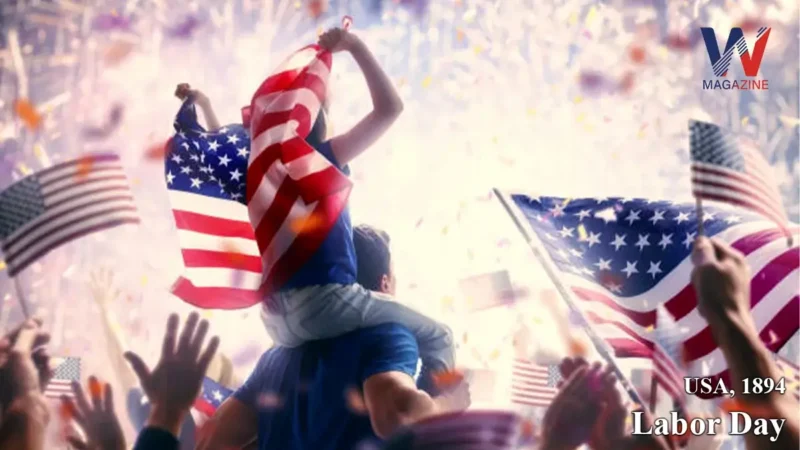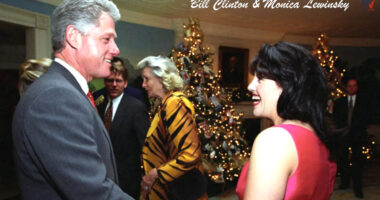Table of Contents
- Key Takeaways
- The Inauguration of Labor Day
- Labor Day & May Day
- A Gesture of Reconciliation
- Shaping the American Labor Movement through Radical Influence
- The Aftermath of the Haymarket Incident
- Labor Day Celebrations Today
- Labor Day FAQs
- When is Labor Day?
- What day is Labor Day 2024?
- What is the Labor Day meaning?
- Why can’t you wear white after Labor Day?
- Is Labor Day a Federal Holiday?
- Why do we Celebrate Labor Day?
- When is Labor Day in 2023?
- What day is Labor Day typically Observed?
- When is Labor Day this year?
- Is Labor Day a Paid Holiday?
- What ends on Labor Day?
“Labor Day’s history is as colorful as it is lengthy”
Labor Day became a national holiday in the United States in 1894. For many, this day brings to mind picnics, parades, a break from work and the transition from summer to fall.
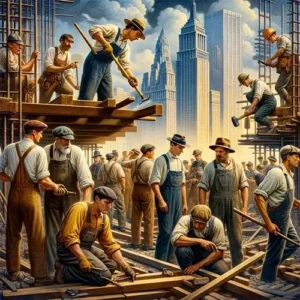
However, the holiday truly honors the significant contributions of U.S. workers. Throughout history, these workers have tirelessly contributed under often harsh conditions to build the country’s strength, wealth and prosperity.
Key Takeaways
- New York City hosted the first Labor Day parade in 1882.
- In 1894, Labor Day became a national holiday, celebrated on the first Monday of September.
- Labor Day has its origins in the Haymarket Riot of 1886, where thousands of Chicago workers protested for an eight-hour workday, leading to violent encounters with the police.
- While marking the unofficial end of summer, Labor Day still features worker-focused parades and celebrations as part of the federal holiday.
The Inauguration of Labor Day
In 1894, American workers experienced their first September Monday off work, marking the establishment of Labor Day as a national holiday.
At that time, working conditions were severe across various industries such as factories, railroads, mills and mines. Workers, including children, often had to endure over 12 hours of labor a day, six days a week, in cramped and poorly ventilated spaces.
Rise of Workers’ Movements
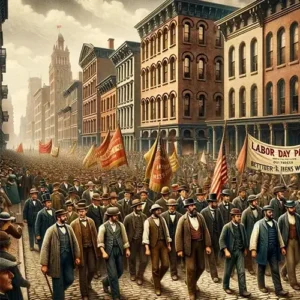
Following the Civil War, there were numerous strikes and rallies advocating for shorter workdays and improved working conditions. The first recorded Labor Day parade, organized by union leaders in New York City on September 5, 1882, was a pivotal moment in this movement.
A Day of Celebration & Unity
During this initial celebration, tens of thousands of union members from diverse professions like bricklayers, jewelers and garment workers took unpaid leave to march with their locals. The event concluded with communal picnics, speeches, fireworks and dancing.
By the time Labor Day was recognized as a federal holiday, 24 states had already declared it an official holiday. Today, Labor Day parades and celebrations continue to highlight the solidarity and strength of trade and labor organizations.
“Wordle Magazine has explained almost all the essentials of USA Labor Day but you can check the website of International Labour Organization to get more information on labor day.”
Labor Day & May Day
Both Labor Day in the United States and May Day or International Workers’ Day, have roots in violent conflicts between labor forces and police in the American Midwest.
The Haymarket Riot: Sparking May Day
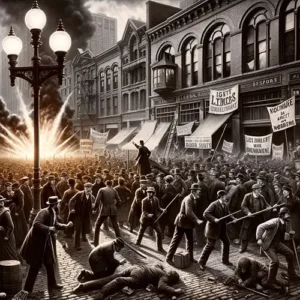
The event known as the Haymarket Riot started on May 1, 1886, when thousands of workers marched through Chicago demanding an eight-hour workday. This protest spanned several days. On May 4, someone detonated a bomb, resulting in the deaths of seven police officers and eight civilians but the bomber was never identified.
Inspired by the Haymarket Riot, socialists in Paris declared May 1st as May Day, a holiday to honor workers’ rights, during an international meeting in 1889. Today, May Day is celebrated as International Workers’ Day in many countries globally.
The Pullman Strike & the Establishment of Labor Day
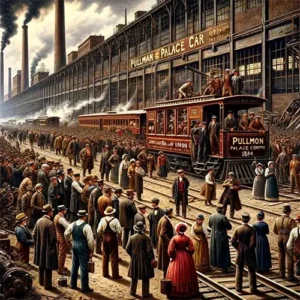
In May 1894, the Pullman Palace Car Company workers in Chicago went on strike to protest 16-hour workdays and low wages. The powerful American Railway Union (ARU) supported them by refusing to handle Pullman cars, which severely disrupted rail traffic nationwide.
Shortly after the ARU joined the Pullman strike, President Grover Cleveland signed a bill making Labor Day a national holiday. In response to the ongoing strike, he also sent federal troops to Chicago to break the boycott. The intervention led to riots, with National Guard troops firing into the crowd and killing several strikers.
A Gesture of Reconciliation
Labor Day emerged as a conciliatory gesture towards labor, presenting a less radical alternative to International Workers’ Day. Over time, business owners started to recognize and meet workers’ demands for better conditions.
Henry Ford’s Revolutionary Wage Policy
In 1914, Henry Ford dramatically increased wages to $5 a day, doubling his profits within two years. This successful strategy led his competitors to consider that improving wages might be beneficial. By 1926, Ford further improved conditions by reducing the workday from nine hours to eight.
The 1938 Fair Labor Standards Act, introduced during the New Deal era, made significant strides in labor rights. It restricted child labor, established a minimum wage and reduced the workweek, including provisions for overtime pay for longer shifts.
Workweek Transformation by the 1940s
By the 1940s, the average workweek had evolved to five days, each consisting of eight hours, marking a significant reduction in work hours compared to previous decades.
“In February 2023, the Unites States Labor Department reported a 69% increase in child labor in the country since 2018.”
Shaping the American Labor Movement through Radical Influence
The American labor movement was heavily influenced by deep political divisions throughout the 20th century. Anarchists, communists and socialists played key roles as early labor organizers, recognizing the transformative power of collective worker action in striving for a just society.
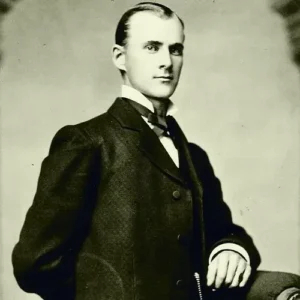
Eugene V. Debs was instrumental in founding the American Railway Union and the Industrial Workers of the World (IWW) and he ran for president five times as a candidate from the Socialist Party. Noteworthy labor activists of the time also included anarchist Lucy Parsons, socialist Big Bill Haywood and communist Elizabeth Gurley Flynn.
In more recent history, figures such as civil rights leader Bayard Rustin, Secretary of Labor and worker rights advocate Frances Perkins and farmworker rights champion Dolores Huerta have continued to influence the labor movement. These leaders have carried forward the legacy of pushing for equitable labor rights and social justice.
The Aftermath of the Haymarket Incident
Following major strikes and demonstrations, political arrests frequently targeted leaders. Notably, after the Haymarket Incident, numerous foreign-born radicals and labor organizers were detained by police in Chicago and other areas.
Unjust Trials & Executions
In a notable trial, eight men identified as anarchists were wrongfully convicted without any evidence linking them to the bombing at Haymarket. Seven were sentenced to death and four were executed. This event was part of broader efforts to suppress the burgeoning labor movement and eliminate its radical leaders.
Global Influence of Socialism & Communism
Starting in the 1920s, the Union of Soviet Socialist Republics showcased the implementation of socialism and communism on a grand scale. By 1949, communists had taken control in China, establishing the People’s Republic.
Post-World War II, during the Cold War between Western and communist countries, anti-communist sentiment was widespread in the U.S. The 1947 Taft-Hartley Act compelled union officials to declare they were not affiliated with communists, leading to the expulsion of radicals from some unions. In 1965, the U.S. Supreme Court ruled this requirement unconstitutional.
Labor Day Celebrations Today
Labor Day weekend has become synonymous with barbecues, getaways and summer clearance sales. Yet, worker-oriented Labor Day parades and celebrations continue to thrive in numerous cities across the U.S. These parades are notably diverse, reflecting the increased ethnic and racial diversity within today’s unions.
“If you are getting on a business trip for any company than you must be familiar with per diem rates. It is a daily amount of money given to an employee to cover costs during a business trip.”
Impact of the COVID-19 Pandemic
From 2020 to 2022, the COVID-19 pandemic led to the cancellation of many Labor Day parades. For instance, the Detroit Labor Day Parade was called off three times due to the rise in COVID cases and concerns about Monkeypox. However, in 2022, many cities resumed their Labor Day parades.
Modern labor leaders, who often concentrate on immediate employment issues, remain prominent in the AFL-CIO and other unions. Unions continue to support their members by endorsing political candidates, backing political action committees and advocating for civil rights and worker safety.
Union membership is experiencing a resurgence after years of decline. This revival is partly driven by the pandemic’s impact on workers and a tight labor market in 2022. Notably, workers at facilities and stores of major companies like Amazon, Starbucks and Apple have successfully organized unions, pushing for better pay and working conditions.
Labor Day FAQs
When is Labor Day?
Labor Day is observed on the first Monday of September each year.
What day is Labor Day 2024?
Labor Day 2024 will be celebrated on Monday, September 2.
What is the Labor Day meaning?
Labor Day is a holiday that honors the contributions and achievements of American workers, marking the significance of labor rights and the labor movement in the United States.
Why can’t you wear white after Labor Day?
The tradition of not wearing white after Labor Day is considered an outdated social rule stemming from early 20th-century fashion etiquette, where white was a summer color and darker tones were favored in the fall and winter.
Is Labor Day a Federal Holiday?
Yes, Labor Day is a federal holiday in the United States. Most government offices, schools and many businesses are closed on this day.
Why do we Celebrate Labor Day?
We celebrate Labor Day to recognize and honor the contributions and resilience of workers and the labor movement’s role in securing labor rights and better working conditions.
When is Labor Day in 2023?
Labor Day in 2023 is on Monday, September 4.
What day is Labor Day typically Observed?
Labor Day is typically observed on the first Monday in September.
When is Labor Day this year?
Labor Day is on September 4th this year.
Is Labor Day a Paid Holiday?
Yes, Labor Day is typically a paid holiday for many workers. However, it depends on the company’s policy or the employment contract.
What ends on Labor Day?
Labor Day often marks the unofficial end of summer. Many summer activities, like public swimming pools and summer camps, usually wrap up around this time.
